Home Seller Guide
1. Making the Decision
Selling a home is not a decision to be taken lightly. For most people, their home represents their largest investment and can be a valuable asset for building wealth. However, without proper planning, this investment can become a costly mistake. It is essential to take the time to identify your goals and priorities for the move.
Looking at the numbers: Contact your lender to determine your remaining mortgage balance and calculate the equity you have in your home. This information can assist in budgeting for necessary improvements before listing your property and/or help in planning for your next purchase.
Identify your nonnegotiables: Jot down your must-haves and deal-breakers. Determine the timeline you are working with and why. Establish a budget for any pre-market upgrades or improvements and also determine the minimum acceptable sale price.
2. Timing is Everything
It is crucial to have a thorough understanding of the local market when considering selling a property. At the very least, it is important to determine whether it is a buyers or sellers market. Additionally, knowing which months and weeks of the year attract the most buyer traffic is essential. If you have the flexibility to choose your timing, it might be worth waiting for a sellers market or a time of year that gives you more control over the selling process.
Traditionally, in Minnesota, the optimal time to sell a home, in terms of achieving a higher sales price and reducing the number of days on the market, has been during the first half of May. Homes listed for sale during this period tend to sell approximately one week faster than the average listing duration. To determine the best time to list your home, it is important to put yourself in the shoes of your target buyers. For example the buyer could have children and are seeking a home prior to the school year or maybe they are first-time home buyers relocating during the hiring season. Planning your listing date around these scenarios will help you attract the right buyers and optimize your selling strategy.
3. Representation: Agent vs FSBO
An important decision you’ll need to make early on is whether to sell your home on your own as a ‘For Sale By Owner’ (FSBO) or with the assistance of a real estate agent. Roughly 10 percent of home sales are completed without the involvement of an agent, and an additional 10 percent of sellers initially attempt to sell on their own but ultimately choose to hire an agent. Considering that your home represents your most valuable asset it is crucial to carefully weigh the advantages and disadvantages of each option from the start.
If you plan to sell FSBO:
- Understand that a quality real estate agent works full-time and do provide contract advice. Are you ready or able to allocate enough time to prepare your home for listing and market it across multiple channels? Do you understand the X&Os of real estate contracts, disclsoures and the closing processes?
- You need to do your comp research – both online and in person. Buyers will be looking at many houses when they are buying – know how you stack up in comparison to finish and price is a must – not just by online photos – go see them in person!
- Understand local disclosure and inspection requirements. Depending on the type of property and municipal ordinances you may be required to conduct pre-market inspections and conduct appropriate repairs.
- Keep your hours flexible while listing for sale. You will be expected to show the home with little notice and also need to follow up on calls and emails in a timely matter to answer questions from buyers and their agents.
If you plan to hire an agent:
- Do your homework upfront and develop your winning interview questions.
- Find an experienced agent with proven results that works in your market.
- Don’t hesitate to negotiate your listing contract – it’s far more than just the list price.
- Your agent works for you – have them develop a listing strategy and hold them accountable.
- Communicate with one another – great agents should do the heavy lifting on this one, but you are a team – work together towards a common goal.
4. Improvements & Staging
Getting your home ready for sale requires some effort, whether it’s your own sweat equity or hiring a pro there are a few things you can do to set yourself apart. Your goal is to have potential buyers fall in love with your home, just as you did when you first purchased it. Take the time upfront to ensure your home appeals to the widest range of prospective buyers.
According to research, sellers spend an average of $4,950 on preparing their homes for sale. The repairs and upgrades you choose to undertake will depend on your home’s condition and budget. Work with your real estate agent to identify the repairs that will net you the most at closing. Here are a few home improvement tips to consider that have proven results:
Basic Repairs: Ensure that all components of your home are functioning properly. Repair or replace any broken bulbs, switches, ceiling fans, door knobs, leaky faucets, loose railings, and steps. Address any visible cosmetic issues, such as holes, dents, peeling paint, water damage, cracked windows, or tiles. Upgrade outdated light fixtures and hardware with modern styles to instantly enhance the overall look.
Clean & Declutter: Remove personal photos, collections, and decorations that may divert buyers’ attention from the property’s main features. Remove unnecessary, dated, and bulky furniture that creates a sense of darkness and congestion. Consider hiring a professional cleaning service to thoroughly clean the home, ensuring it appears pristine and emits a fresh scent.
Freshen & Brighten: Eliminate dated wallpaper and apply neutral paint, allowing the unique features of your home to take center stage. Take down dark and heavy curtains to invite more natural light and draw attention to the windows. Remove/replace soiled carpeting, and give dull and worn floors a polished. Consider applying a fresh coat of bright white paint to older kitchen cabinets or dark wood vanities, and update the hardware for an immediate transformation.
Create Wow Factor: Arrange furniture strategically to improve the flow and create a perception of larger spaces. Complement your furniture with trendy and modern accents, such as shag or woven rugs, colorful wall art, decorative pillows, and bright white bedding, to help buyers form an emotional connection with the home. Staging will set your home apart from the crowd and has proven its return time and time again.
Selling as-is to avoid major improvements – while you may receive a lower sale price in the end, selling your home as-is, without undertaking significant improvements, can expedite the overall selling process and reduce upfront out-of-pocket costs.
5. Pricing to List & Sell
Determining the appropriate price for your home is both an art and a science. Research shows that 57%+ of homes nationwide sell at or above list price if they receive an offer in the first week. Conversely, this drops roughly 10% each subsequent week on the market. To expedite a sale, utilize all available resources to assist in pricing your home.
Get your Zestimate: A Zestimate is the estimated market value for your home which takes into account numerous public and user-submitted data points, making it a good initial starting point in the home-pricing process. But beware, Zestimates can range daily, and have proven to move +/- 10-15% as new listings come online in your area.
Review Comps: Comparables, or “comps,” are recent home sale records and stats. Comps should be the same bedroom and bathroom count, general square footage and condition. The closer they are to your home’s location, the better the comparison. Take the time to understand the $/sqft – this will help you identify a range for your neighborhood and allow you to speak with confidence when interviewing agents.
Consult a real estate agent: Your real estate agent is an expert in your local market and can help you determine the appropriate listing price for your home. They have actually seen the homes that you see online and can explain pricing nuances. A good agent will be able to explain the list price vs estimated sales price and how list price is a crucial advertising tool.
6. Storming The Market
Once your home is prepared for potential buyers, the following step is to make your listing visible to as many prospective buyers as possible. Remember real estates golden rule Maximum Price=Maximum Exposure. Here are some suggestions on how to list your home for sale:
Promote on multiple platforms: In today’s world, people search for homes in numerous ways, ranging from browsing online, social media, or even randomly walking past an open house. Make sure your agent is working every possible medium available to increase the likelihood of potential buyers viewing your home.
Invest in professional marketing photos: Your home’s MLS or Zillow listing photos is most likely the first impression of your property any buyer or agent will have. Professional images are a bare minimum requirement! To ensure that your pictures are high-quality and realistic, hire a professional photographer. You may want to consider professional videography to put your home over the competition.
Create a compelling listing description: Your listing description must highlight your home’s finest features and the amenities that buyers are looking for in your neighborhood. If a rooftop deck, backyard pool, access to public transportation, or nearby parks are popular, be sure to include them in your description. However, keep your listing brief and avoid features that aren’t relevant.
Schedule showings: You’ve done everything necessary to prepare your home for buyers; now, make sure to accommodate as many showings as feasible, whether that’s via remote viewings, private tours, or open houses. A clean house is just one aspect of a showing; provide a method for visitors to leave feedback, keep track of who visits your home, and follow up with interested parties as needed.
7. Picking the Right Offer
Once offers begin to arrive, your real estate agent will assist you in evaluating each one and treating it as a negotiation opportunity. There are three options for responding to an offer for your home: accept, reject, or counter-offer. For each offer, take the time to carefully review and consider the following aspects:
• The proposed offer price.
• The prospective buyers pre-approval or pre-qualification documentation.
• Details of any contingencies (financing, appraisal, inspections, repairs, etc.).
• The amount of the proposed earnest money deposit.
• Proposed closing date.
Try not to be swayed by the highest offer, as it may not always be the best one. Real estate transactions can be complex, and deals can fall apart at the last moment. A competent agent can manage any complexity to avoid delays and ensure a smooth process.
Contingencies that may be attached to an offer include buyer securing financing, a title search to ensure there are no claims against the title, contractual promises such as repairs and buyer incentives, the buyer’s home inspection, a home appraisal requested by the lender to ensure that the home’s sale price justifies the loan amount, and could even require the buyer to sell their home first. All contingencies are negotiable – be sure to understand what truly is most important to the buyer prior to accepting any offer.
8. Inspections & Closing Hurdles
Obtaining an optimal offer is the most significant obstacle to the home-selling process. However, the challenges may continue even after your home is under contract. The following are potential difficulties that may arise during the period between accepting an offer and closing day.
Poor inspection report: A home inspection conducted by the buyer may reveal significant issues with the home that may cause the buyer to abandon the deal. After the report is completed, be prepared to renegotiate the terms of the agreement.
Low home appraisal: If the buyer is financing your home, their lender may order an appraisal to ensure that the home’s value is equal to or greater than the sum borrowed. If the appraisal value is lower than the loan amount, the buyer must come up with the difference in cash, or cancel the deal.
Financing problems: During the underwriting process, the buyer’s financing may fall through due to new debt, missed credit card payments, changes in employment status, or any other factor that the bank perceives as high risk.
9. The Move Out
Plan for expenses: Moving can be an expensive and time-consuming process, regardless of where you are relocating. The average hourly rate of $100/hr charged by two movers and a moving truck for a local move of fewer than 100 miles, the expenses can quickly add up.
Timing it out: To avoid any unexpected costs on moving day, take the necessary steps to prepare beforehand. Make sure inspection repairs have been completed, services are scheduled to be transferred, and that you have removed all items from the house, garage, and storage. If you are buying and selling simultaneously, consider temporary housing to avoid the stress of timing your sale and purchase correctly, as it is a rare occurrence.
Move quickly: Considering that the average period between listing and closing a house in 2018 ranges from 65 to 93 days. Therefore, you must be prepared to move within a short time frame, as it is necessary to vacate the home completely by the closing date.
10. The Closing & Beyond
As the seller, you are responsible for some legal documents and processes when closing on your home. Below are some of the steps you should take care of:
Complete all necessary repairs: If you agreed to complete certain repairs or obtain certifications, such as a sewer line inspection or roof condition certification, as part of the post-inspection negotiations with the buyers, ensure that you have completed them before closing.
Review expected closing costs: It is important to review the estimated closing costs ahead of closing day since closing can be expensive. Closing costs may add up to 8 to 10 percent of the sale price of the home, comprising your agent’s commission, the buyer’s agent’s commission (usually paid by the seller), taxes, and fees.
Sign documents: The final step is to attend the closing appointment and sign all legal documents related to the sale of your property. As a seller you have the benefit of being able to sign before the actual day of closing – reducing stress as you move.
Close the transaction: During closing, the closing agent/company hired at the beginning of the transaction, will record the new deed with the county, pay off any remaining mortgage balance, pay all closing costs, and ensure you receive your profit.
Beyond: There are always small things that pop up for a buyer as they move in – paint colors, extra supplies, recurring services, etc. Your agent will reach out to you to help cover most of these common questions.


